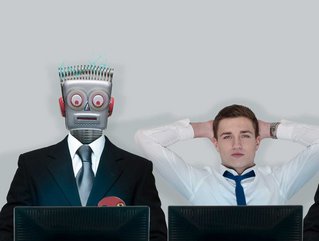Don’t panic: Robots are not coming to take your job...yet

The rise of robots at work is no reason to panic, says a new study, as people are prone to exaggerate the rate at which robots will “take their jobs”.
Brigham Young University Sociology Professor Eric Dahlin found robots aren’t replacing humans at the rate most people think while researching his report, published in Socius: Sociological Research for a Dynamic World.
Dahlin’s research found only 14 per cent of workers say they’ve seen their job replaced by a robot, and those who have experienced job displacement due to a robot overstate the effect of robots taking jobs from humans by a factor of three.
Dahlin surveyed nearly 2,000 individuals about their perceptions of jobs being replaced by robots. Respondents were first asked to estimate the percentage of staff whose employers have replaced jobs with robots. They were then asked whether their employer had ever replaced their own job with a robot.
Those who had indeed been replaced by a robot - about 14 per cent - estimated that 47 per cent of all jobs have been taken over by robots. Those who hadn’t experienced job replacement still estimated that 29 per cent of jobs have been supplanted by robots.
“Overall, our perceptions of robots taking over is greatly exaggerated,” says Dahlin. “Those who hadn’t lost jobs overestimated by about double, and those who had lost jobs overestimated by about three times.”
Humans and robots working together for greater value
Dahlin says these findings tally with previous studies, which suggest robots aren’t displacing workers - in fact, workplaces are integrating both employees and robots in ways that generate more value for human labour, he explains.
“An everyday example is an autonomous, self-propelled machine roaming the isles and cleaning floors at your local grocery store,” says Dahlin. “This robot cleans the floors while employees clean under shelves or other difficult-to-reach places.”
Dahlin says the aviation industry offers additional examples of robots and humans working together. Aviation manufacturers used robots to paint aeroplane wings. A robot can administer one coat of paint in 24 minutes – something that would take a human painter hours to accomplish. Humans load and unload the paint while the robot does the painting.
Attention-grabbing headlines have likely fueled the threat of robots taking over jobs, says Dahlin. “We expect novel technologies to be adopted without considering all of the relevant contextual impediments such as cultural, economic, and government arrangements that support the manufacturing, sale, and use of the technology,” he says. “But just because a technology can be used for something does not mean that it will be implemented.”






